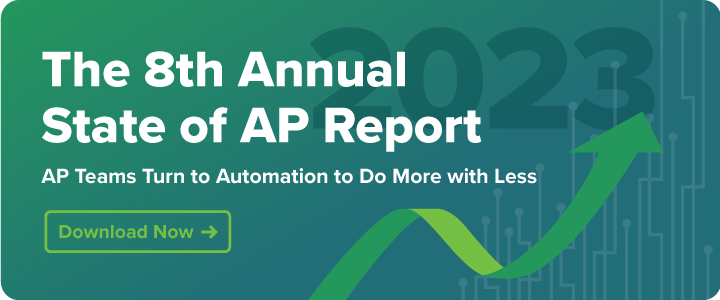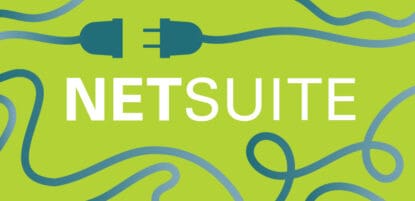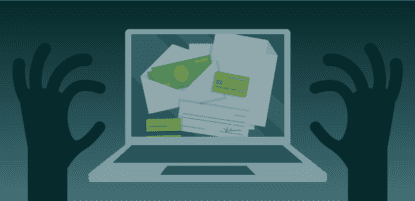As AP automation becomes a topic of interest for many businesses, it’s important to understand the significant workflow changes that occur with an automated process. In this blog, we compare the manual accounts payable workflow with the automated accounts payable workflow — highlighting the advantages of the latter — and discuss how you can get started with automation by using an end-to-end AP automation solution.
What is Accounts Payable Workflow Automation?
The end-to-end accounts payable process involves many steps —from invoice capture and approvals to payment authorization and execution. At any given organization, some or all of the steps may involve both manual processes — those done by hand or requiring physical interactions — and electronic or automated processes — those done by computer.
Because most AP departments rely on the use of computers for at least some of their workflow, it’s possible to introduce automation into the process. This generally frees up time so that employees can focus on more creative endeavors and can also speed up the time it takes to process an invoice and render payment, as well as reduce errors.
With AP automation, many of the steps are handled by the AP software and executed either as soon as an invoice reaches that step or as soon as an employee initiates it. The automated steps may include invoice capture, routing invoices for approvals, payment authorization, payment execution, and more.
What is the Accounts Payable Workflow with Manual Processes?
To understand both the benefits of AP automation and what it looks like, it’s first important to understand the workflow with manual processes for contrast. Your organization may rely on many of these manual steps currently, in the past, or you may already rely on some degree of automation.
Invoice Data Capture & Coding
Manual invoice capture typically involves paper receipt of invoices that must then be manually typed and coded into the existing accounting system. Note that often, with manual processes, there is more potential for error. When invoices are received and captured manually, this error can come in the form of a lost or misplaced invoice as well as typographical data entry mistakes. Some organizations may receive invoices electronically via their email, and still capture and process them manually.
Invoice Approvals
The manual approval process often requires the physical delivery of the paper invoice to the approver. However, this doesn’t work as well in a remote or hybrid work environment and can lead to delays anytime the approver is out of the corporate office. Physical paper is also at risk of being misplaced or lost.
Sometimes manual invoice approval relies on email, which eliminates the chances of misplaced paper or delays due to absence in the office. Email approval, however, is still subject to other delays or getting lost in the receiver’s inbox, and relies on the AP staff to continually monitor and remind department heads until approvals are received.
Payment Authorization
Payment authorization may also rely on physical papers being passed to the right person, or an email chain. Often, the AP staff will prepare a weekly payment run and print any invoices or supporting documentation associated with payments. The CFO or Controller authorizes the payments and often prioritizes which vendors are paid first.
Payment Execution
Manual payment execution involves printing and signing paper checks before sending them to vendors in the mail. This type of payment execution isn’t typically compatible with remote or hybrid work environments, since someone must be physically present to stuff the envelopes. It can also lead to payment delays since checks take time to travel through the mail and may even get lost. Even electronic payments may require significant manual effort. For instance, when making ACH or wire payments through a bank bill pay portal, AP staff often have to manually key in information for each vendor and payments, manually initiate the payments once approved, and then create manual journal entries in their accounting system to reconcile those payments.
Supplier Enrollment & Management
Enrolling and managing suppliers requires obtaining each supplier’s contact information and payment preferences, and ensuring those details remain up-to-date. It can also include responding to supplier inquiries and taking other actions to ensure positive supplier relationships.
When handled manually, this process often falls by the wayside as AP teams struggle to get payments out the door. The AP department may acquire the supplier’s initial information upon enrollment, but fail to verify and update it regularly. Supplier inquiries are often challenging to handle manually as well because it may not be easy to determine where a given invoice is in the process, or whose desk it is currently sitting on.
Reporting
In order to ensure efficiency and to track key performance indicators (KPIs), AP departments are often tasked with generating reports. When handled manually, this often means pulling data from different sources into Excel before aggregating and manipulating it. Challenges include difficulties in identifying and including all relevant data, as well as the time and effort involved in timely report generation.
How Does Automation Improve the Accounts Payable Workflow?
There are many reasons companies automate AP. When adopted correctly, it can help streamline workflows, reduce errors, and save both time and money. Here we outline what the different parts of the accounts payable process look like when automated and how automation improves the overall AP workflow.
Seamless Invoice Data Capture & Coding
Invoice capture is easiest when suppliers either deliver invoices electronically. When delivered via email, automation can be used to route invoices to a dedicated inbox from which their information is extracted and automatically entered into the system.
Enhanced Optical Character Recognition (OCR) technology can scan an invoice with a camera and enter the information into the system, no typing needed. Furthermore, any AP software capable of integrating with your ERP system can help ensure that all invoices are captured and coded correctly as soon as they are received.
Faster Invoice Approvals
Automation helps with the approval process by automatically routing invoices to the appropriate department heads based on predefined rules. Those department heads can receive the notification on any electronic device connected to the internet and approve with just a single click. It’s also possible to automate reminders so that any unapproved invoice receives a nudge after a certain amount of time.
Payment Authorization From Anywhere
Just as with approvals, automation makes it possible to authorize payments from anywhere at any time. All the authorizer needs is a device with internet and access to an approver dashboard. Authorizations can be automatically routed to the authorizer, authorized with a single click, and ready to go.
Automated Payment Execution
When payment execution is automated, not only does the payment arrive faster, but vendors can receive automatic payment notifications, the details of the payment are automatically reconciled within the ERP system, and updates show up in bank accounts right away. The payment itself is typically delivered in electronic format, either as a virtual card or an ACH payment, though it’s possible to incorporate other payment forms into a mostly automated AP process as well.
Supplier Enrollment & Management
By adopting an AP automation platform with managed services, you can alleviate the administrative work associated with managing and enrolling suppliers. With MineralTree, for example, we contact suppliers on your behalf and keep details updated with continuous enrollment.
Some AP automation vendors offer supplier or vendor portals to help with the enrollment and management process. These portals may allow suppliers to enter and update their information as needed, track current invoices and payments, or download remittances.
Reporting & Advanced AP Analytics
By using an AP system that handles the entire end-to-end AP process, all data associated with invoices and payment is stored in a central location. The right AP automation platform will have tools that allow you to automatically pull relevant metrics into a report without needing to manually enter and manipulate anything.
How do you Automate the Accounts Payable Workflow?
With the right AP automation solution, it’s easy! MineralTree’s TotalAP helps you automate your accounts payable workflow by digitizing the entire invoice-to-pay process. You’ll be able to pay your suppliers more easily, capture early payment discounts and rebates, and maintain a positive supplier relationship. Our solution also easily scales from processing hundreds to tens of thousands of invoices every month, providing you the flexibility you need without adding headcount.
If you’re ready to improve visibility, efficiency, security, and supplier experience while fueling growth, mitigating risk, streamlining processes, and saving money, then it’s time to see what MineralTree TotalAP can do for you. Request a demo today to learn more.





